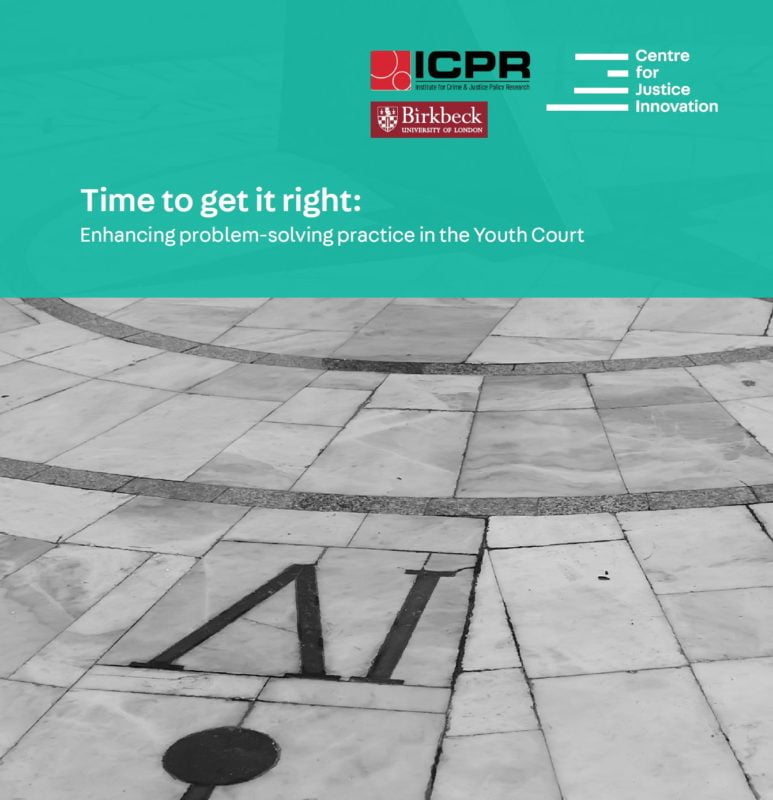Delays and poor practice
Time to get it right
New (30 June 2020) research from the Centre for Justice Innovation and the Institute for Crime and Justice Policy Research has found that problem-solving practice in the youth court is an ideal rarely realised.
Their new report: Time to get it right: Enhancing problem-solving practice in the youth court makes a major contribution to the evidence-base and provides a benchmark against which future progress towards a child friendly youth court can be assessed.
Background
In the last 10 years, there has been a 75% decline in cases coming into the youth court, caused by both
falls in youth crime and the youth justice system’s success in diverting eligible cases away from court.
However, while there are currently fewer court-involved young people, they tend to have more significant
welfare and other needs as well as more serious offending profiles than they did a decade ago.
Having fewer court-involved young people to work with gives the youth justice system a golden opportunity to concentrate its energies on further reducing reoffending and preventing future harm. To that end, the Carlile Inquiry in 2014, the Taylor Review in 2016 and the Lammy Review in 2017 all advised that youth court practice should become more ‘problem-solving’, to better address children’s underlying welfare needs.
Findings
The research looks specifically at current youth court practice through the lens of evidence-led problem-solving justice by focussing on the procedural fairness of youth court hearings. Fieldwork was conducted in three sites between February and October 2019.
The researchers found many dedicated practitioners and saw examples of creative and innovative practice being developed locally. One site was trialling a form of post-sentence judicial monitoring to provide informal, YOS-managed review hearings for young people on Youth Rehabilitation Orders (YROs). A second site was preparing to pilot a similar approach, in which magistrates, in partnership with the YOS, will hold informal, monthly reviews of YROs.
However, researchers also observed practice which fell short of what is recommended for the youth court: long delays, especially in cases coming to court; lack of availability of professionals with the required specialisms for youth court; limited services to respond to children and young people’s speech, language and communication or mental health needs; limited engagement by children’s services (understandable given their resource constraints); and generally, a more difficult operational environment, resulting from the twin impacts of constant court modernisation (including court closures and mergers) and reductions in funding.
Overall the research found an over-burdened system in which practitioners struggled to deliver the services required of them by national government. As a result, vulnerable children and young people coming before the court are not always receiving the treatment they need – making it all the more likely they will offend again.
Recommendations
The report makes five principal recommendations:
- Tackle pre-court delays and maximise diversion opportunities pre-court.
- Improve the procedural fairness and specialisation of youth courts.
- Bolster services to improve collaborative supervision and intervention for vulnerable children and young people.
- Extend and evaluate trials of the innovative judicial monitoring ‘problem-solving’ review model.
- Improve the operating environment to guarantee fairer outcomes.
Thanks to Olav Ahrens Røtne for permission to use the header image published on Unsplash.









